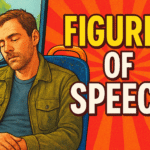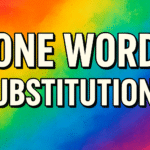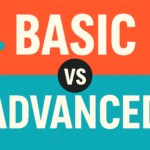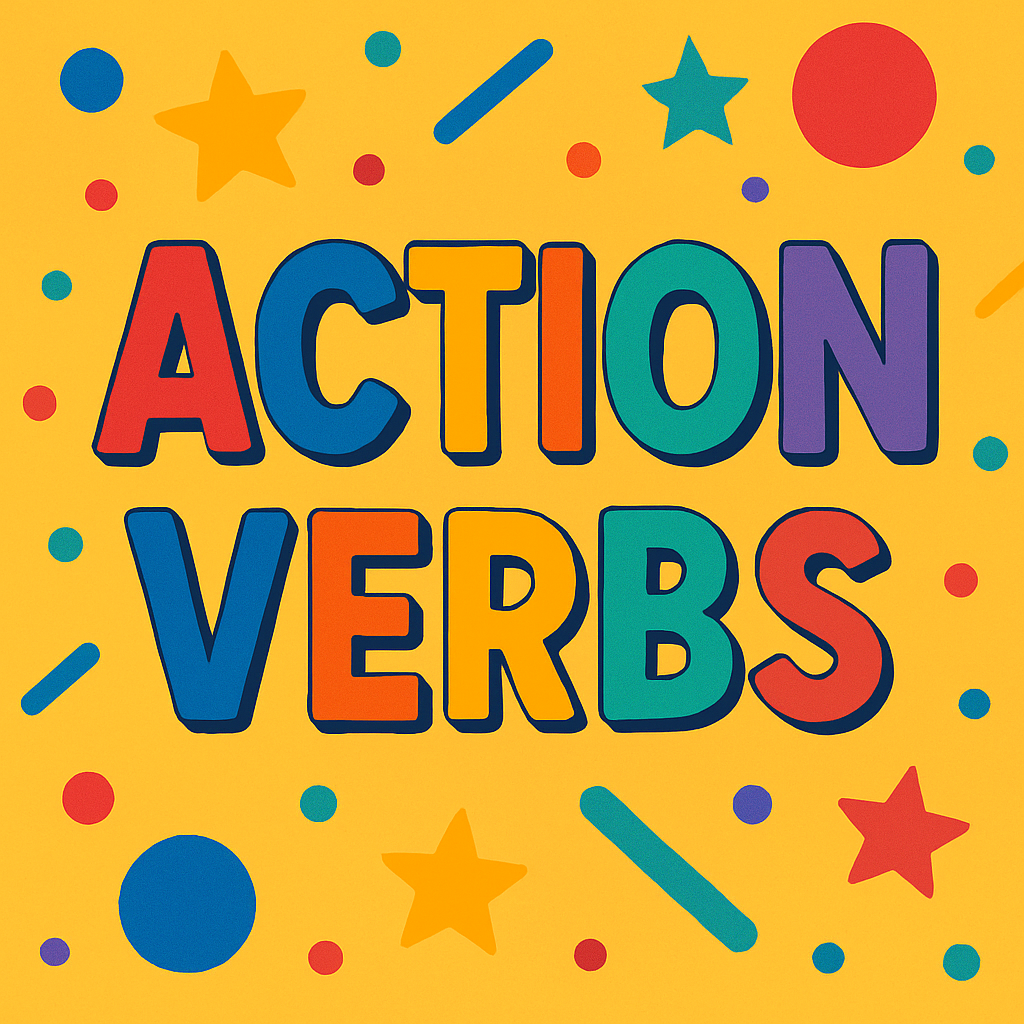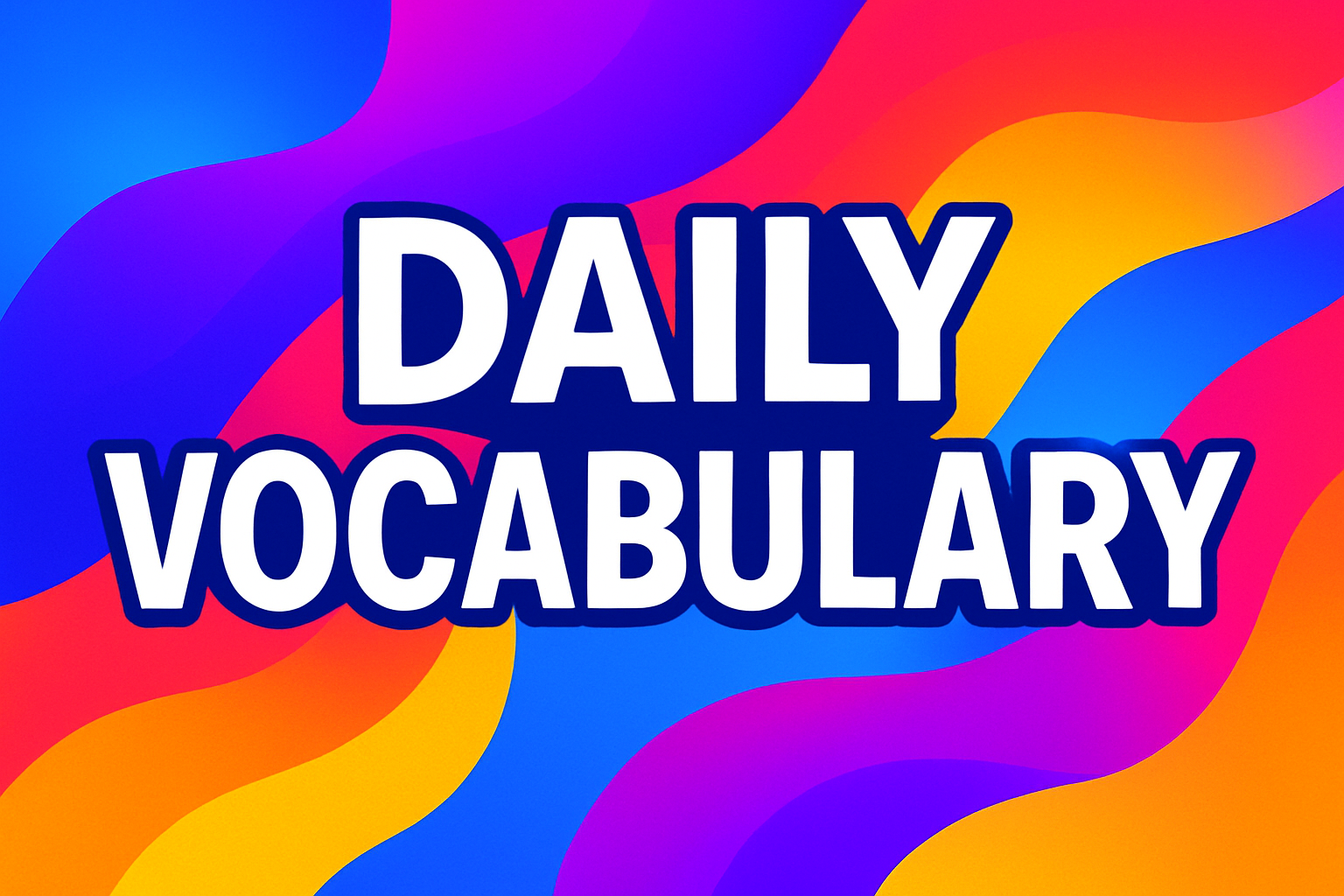Action Verbs: A Comprehensive Explanation
Action verbs are words that describe actions, activities, or states of being performed by a subject. They are the backbone of dynamic and engaging sentences, conveying what someone or something does. Unlike linking verbs (e.g., “is,” “seem”) or helping verbs (e.g., “has,” “will”), action verbs express physical or mental actions, making them essential for clear and vivid communication.
This explanation covers the definition, types, uses, examples, and key aspects of action verbs, along with their role in sentence construction and practical applications.
What Are Action Verbs?
Action verbs describe an action that a subject performs. These actions can be physical (e.g., running, writing) or mental (e.g., thinking, deciding). They add energy and specificity to sentences, helping to paint a clear picture of what is happening.
For example:
- Physical action: She kicked the ball.
- Mental action: He imagined a new world.
Action verbs differ from other types of verbs:
- Linking verbs connect the subject to additional information (e.g., “She is happy”).
- Helping verbs assist the main verb in expressing tense or mood (e.g., “She has finished”).
Types of Action Verbs
Action verbs can be categorized based on the type of action they describe or their grammatical function. Here are the main types:
- Physical Action Verbs:
- Describe tangible, observable actions performed by the body.
- Examples: run, jump, write, build, dance, throw.
- Sentence: The dog chased the cat.
- Mental Action Verbs:
- Describe cognitive or emotional processes that are not physically observable.
- Examples: think, believe, remember, decide, wonder, feel.
- Sentence: She pondered the question carefully.
- Transitive Action Verbs:
- Require a direct object to complete their meaning (the object receives the action).
- Examples: kick (the ball), eat (an apple), paint (a picture).
- Sentence: He wrote a letter. (The direct object is “a letter.”)
- Intransitive Action Verbs:
- Do not require a direct object to complete their meaning.
- Examples: run, sleep, arrive, laugh.
- Sentence: The baby cried loudly. (No direct object is needed.)
- Dynamic Action Verbs:
- Indicate ongoing or continuous actions.
- Examples: swim, talk, study, drive.
- Sentence: They played soccer all afternoon.
- Stative Action Verbs (less common):
- Describe a state or condition, often overlapping with mental verbs.
- Examples: know, own, belong.
- Sentence: She knows the answer.
Note: Some verbs can function as both transitive and intransitive depending on the sentence. For example:
- Transitive: She sang a song.
- Intransitive: She sang beautifully.
Key Characteristics of Action Verbs
- Express Action or Activity:
- Action verbs focus on what the subject does, either physically or mentally.
- Example: The chef cooked a delicious meal.
- Tense Flexibility:
- Action verbs can be conjugated to reflect different tenses (past, present, future, etc.).
- Examples:
- Present: She writes a book.
- Past: She wrote a book.
- Future: She will write a book.
- Active Voice Emphasis:
- Action verbs are often used in the active voice to emphasize the subject performing the action.
- Example: The team won the championship. (Active voice)
- Compare to passive voice: The championship was won by the team.
- Enhance Clarity and Engagement:
- Action verbs make sentences more vivid and direct, improving readability and engagement.
- Weak: She made a decision to go.
- Strong: She decided to go.
How to Identify Action Verbs
To determine if a verb is an action verb, ask:
- Does the verb describe something the subject is doing?
- Is it expressing a physical or mental action?
For example:
- Sentence: The children played in the park.
- Played is an action verb because it describes a physical activity.
- Sentence: The teacher is kind.
- Is is a linking verb, not an action verb, as it describes a state, not an action.
Tip: If you can visualize or imagine the subject performing the verb, it’s likely an action verb.
Examples of Action Verbs in Sentences
Here are examples showcasing different types of action verbs:
- Physical Action Verbs:
- She climbed the mountain.
- He threw the ball to his friend.
- The artist painted a vibrant mural.
- Mental Action Verbs:
- They analyzed the data carefully.
- She dreamed of becoming an astronaut.
- He realized his mistake too late.
- Transitive Action Verbs:
- The chef chopped the vegetables.
- The student read the novel.
- They built a treehouse.
- Intransitive Action Verbs:
- The bird flew high above the trees.
- The audience cheered loudly.
- She smiled at the compliment.
Action Verbs in Different Contexts
Action verbs are versatile and used across various contexts, such as writing, speaking, and professional communication. Here’s how they function in different scenarios:
- Creative Writing:
- Action verbs make stories engaging by vividly describing actions.
- Example: Instead of “He went to the store,” use “He rushed to the store.”
- Résumés and Professional Writing:
- Strong action verbs showcase skills and accomplishments effectively.
- Examples: Led, developed, implemented, achieved.
- Résumé example: Managed a team of 10 to complete a project ahead of schedule.
- Everyday Communication:
- Action verbs clarify instructions and descriptions.
- Example: Instead of “Please make it quick,” say “Please hurry.”
- Academic Writing:
- Action verbs describe processes, experiments, or arguments clearly.
- Example: The researcher conducted an experiment to test the hypothesis.
Common Action Verbs List
Here’s a categorized list of common action verbs for reference:
- Physical Actions: run, jump, kick, swim, dance, write, build, carry, push, climb.
- Mental Actions: think, believe, consider, imagine, decide, plan, remember, understand.
- Communication Actions: speak, shout, whisper, explain, argue, persuade, announce.
- Creative Actions: paint, draw, compose, design, create, invent.
- Work-Related Actions: manage, lead, develop, organize, achieve, implement, deliver.
Action Verbs vs. Non-Action Verbs
To fully understand action verbs, it’s helpful to distinguish them from non-action verbs:
- Linking Verbs:
- Connect the subject to a description or state, not an action.
- Examples: am, is, are, seem, become.
- Sentence: She is tired. (No action, just a state.)
- Helping (Auxiliary) Verbs:
- Support the main verb to show tense, mood, or voice.
- Examples: have, do, will, can.
- Sentence: She has written a book. (Written is the action verb; has is the helping verb.)
- Stative Verbs:
- Describe a state or condition, not an action.
- Examples: know, love, own, belong.
- Sentence: He owns a car. (Describes possession, not an action.)
Tips for Using Action Verbs Effectively
- Choose Specific Verbs:
- Use precise action verbs to convey exactly what happened.
- Weak: He did the task.
- Strong: He completed the task.
- Avoid Overusing Passive Voice:
- Active voice with action verbs is more direct and engaging.
- Passive: The cake was eaten by the children.
- Active: The children ate the cake.
- Vary Your Verbs:
- Avoid repetitive verbs to keep writing interesting.
- Instead of repeating said, use whispered, shouted, or muttered.
- Match the Tone:
- Select action verbs that fit the context or emotion.
- Example: Strolled conveys a relaxed walk, while sprinted suggests urgency.
- Use in Imperative Sentences:
- Action verbs are great for giving commands or instructions.
- Example: Close the door. Listen carefully.
Common Mistakes with Action Verbs
- Confusing Action and Stative Verbs:
- Stative verbs like seem or belong are sometimes mistaken for action verbs.
- Incorrect: She seems the book. (Seems is not an action verb.)
- Correct: She reads the book.
- Overusing Weak Verbs:
- Verbs like do, make, or get are vague and less impactful.
- Weak: He got the job done.
- Strong: He accomplished the task efficiently.
- Incorrect Verb Forms:
- Ensure proper tense and agreement with the subject.
- Incorrect: She run yesterday.
- Correct: She ran yesterday.
Action Verbs in Grammar and Sentence Structure
Action verbs play a central role in sentence construction:
- Subject-Verb-Object (SVO): Common in transitive verb sentences.
- Example: She kicked the ball.
- Subject-Verb: Common in intransitive verb sentences.
- Example: He laughed.
- Verb Phrases: Action verbs can combine with helping verbs to form complex tenses.
- Example: They have been working all day.
Fun Facts About Action Verbs
- Universal Usage: Action verbs exist in every language, as they describe fundamental human activities.
- Phrasal Verbs: Many action verbs combine with prepositions to form phrasal verbs (e.g., pick up, run away).
- Cultural Nuances: Some action verbs have culture-specific connotations. For example, bow may imply a gesture of respect in some cultures.
Practice with Action Verbs
To master action verbs, try these exercises:
- Identify the Action Verb: Read a sentence and underline the action verb.
- Example: She danced gracefully. (Answer: danced)
- Replace Weak Verbs: Rewrite sentences with stronger action verbs.
- Weak: He made a picture.
- Strong: He created a picture.
- Write Sentences: Use a list of action verbs to create vivid sentences.
- Example: Using explore: They explored the ancient ruins.
Conclusion
Action verbs are essential for dynamic, clear, and engaging communication. They describe what a subject does, whether it’s a physical action like running or a mental action like thinking. By understanding their types, uses, and applications, you can enhance your writing, speaking, and overall expression. Whether in creative stories, professional documents, or everyday conversations, action verbs bring sentences to life.

